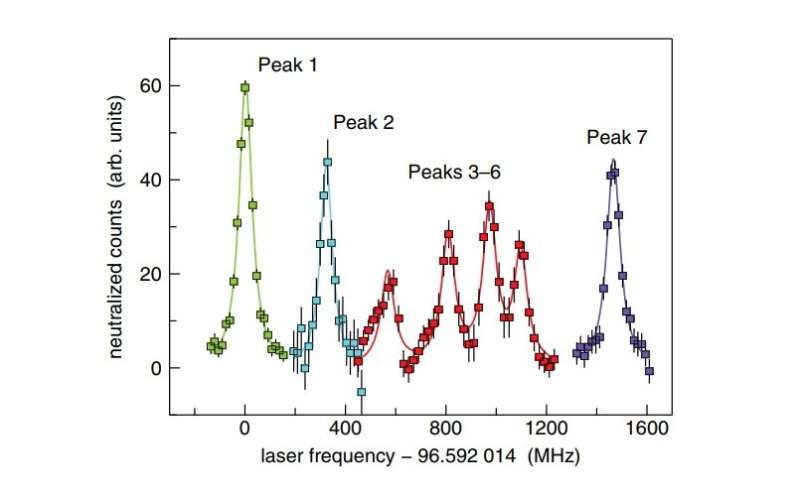April 11, 2018 feature
In quest of the coldest possible antihydrogen

Currently, one of the major goals in ultracold science is to cool antihydrogen atoms to as close to absolute zero as possible. Ultracold antihydrogen would pave the way toward ultraprecise antimatter experiments that could help answer some of the most perplexing questions about antimatter. For example, how does gravity act on antimatter? Why don't we see any antimatter in the universe? And could it be possible to create antiatoms of all of the elements from the periodic table in the lab?
In a new paper published in Physical Review Letters, a team of physicists from Germany and the US has investigated one of the most promising candidates for precooling antihydrogen, which is the negatively charged lanthanum ion.
The reason why lanthanum anions may play a key role in antimatter experiments is that they have just the right electronic properties to undergo laser cooling, a procedure that can cool a system down to some of the coldest possible temperatures. Once the lanthanum anions are laser-cooled, they can then be used to sympathetically cool antiprotons, which are one of the two basic constituents of antihydrogen atoms (the other is the positron, which is a positively charged electron). Ultracold antihydrogen can then be produced from the antiprotons that have been sympathetically cooled by the laser-cooled anions.
In order to successfully implement this approach, however, it's necessary to investigate several properties of the lanthanum anion as they relate to laser cooling. As the scientists explain in the new paper, the complicated electronic structure of lanthanum anions make this type of analysis very challenging, and previous efforts have resulted in large inconsistencies between theoretical and experimental data.
To address these challenges, the scientists performed new experiments using cutting-edge spectroscopy techniques, and also presented a new theoretical approach. In their theoretical approach, they separated the treatment of the electronic correlations into two problems. As the lanthanum anion has 58 electrons, the researchers treated the lanthanum anion as a Xenon-like core (with 54 electrons) with four additional valence electrons. By addressing the core electrons and the valence electrons separately, they were able to calculate theoretical data that closely matched the experimental data. One of the encouraging results was that they found a stronger-than-expected cooling transition, which suggests the promising potential of lanthanum anions for producing ultracold antihydrogen.
"We have now fully characterized the relevant transition in the lanthanum anion, including all its decay channels, and know that the ion can be laser-cooled. Exactly 40 years after the first laser cooling of a positive ion, the laser cooling of a negative ion is just around the corner," coauthor Alban Kellerbauer, at the Max Planck Institute for Nuclear Physics, told Phys.org. "To summarize, we accurately measured the transition frequency and, most importantly, the cross-section (which can be used to directly calculate the transition rate). The theoretical calculations were mostly on branching ratios and also on transition rates, including the measured one of the laser cooling transition. The calculated and measured values (of the Einstein coefficient, which is yet another way of expressing the cross-section/rate) agree well, which supports the much smaller uncertainties of the calculated values as compared with previous efforts."
More information: G. Cerchiari et al. "Ultracold Anions for High-Precision Antihydrogen Experiments." Physical Review Letters. DOI: 10.1103/PhysRevLett.120.133205, Also at arXiv:1712.08275 [physics.atom-ph]
Journal information: Physical Review Letters
© 2018 Phys.org



















